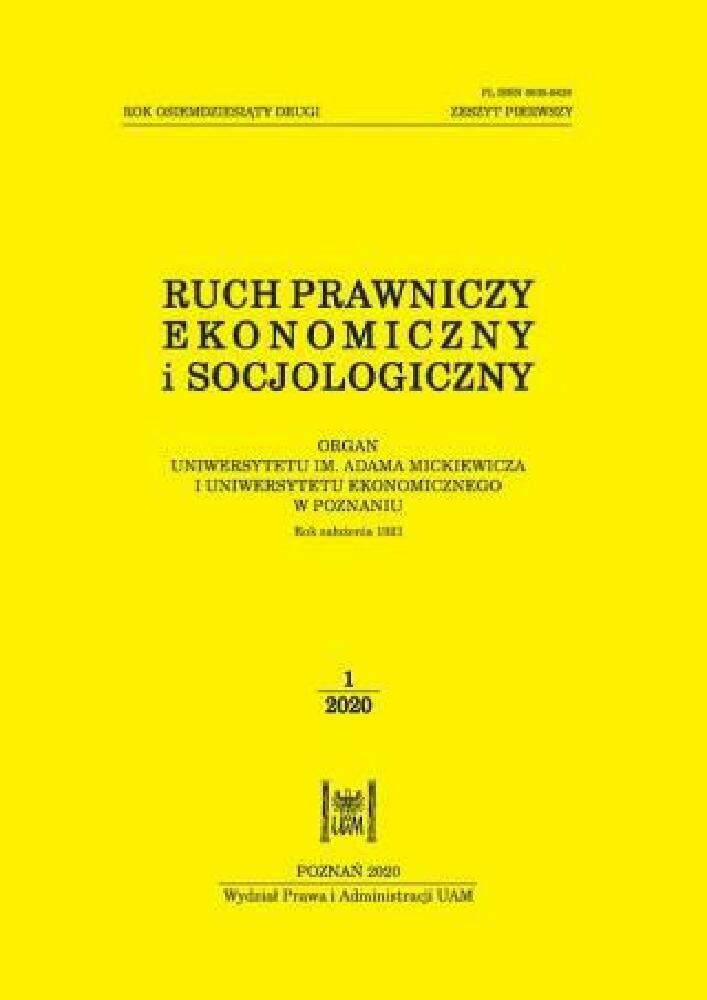Abstract
Poland, the Czech Republic and Hungary are the largest beneficiaries among the countries of the so-called great accession. They showed a number of geopolitical and historical similarities, a lower level of development in relation to the EU15, and growing regional disparities. The aim of the article is to assess the effectiveness of implementing cohesion policy funds in these countries with regard to bridging the development gap and disparities between regions. The scope of the analysis covers the programming and management systems of the Structural Funds and the Cohesion Fund in these countries in the periods: 2004–2006, 2007–2013, 2014–2020 and the post-2020 perspective. Changes in the allocation priorities of the EU funds are associated with the centralization of their management systems (especially in Hungary). Limited effects in regional convergence indicate that the main beneficiaries of the cohesion policy are the dynamically developing capital and metropolitan regions, not the least developed ones. Poor representation of the regions’ interests results from a lack of strong public administration and limited financial independence. The basis of the analysis are the programming documents, literature research, and data from Eurostat and the statistical offices of these countries.
References
Artelaris, P., Kallioras, D., Petrakos, G. (2010). Regional inequalities and convergence clubs in the European Union new member-states. Eastern Journal of European Studies 1: 113–133.
Bachtler, J., Downes, R., Gorzelak, G. (eds.) (2000). Transition, Cohesion and Regional Policy in Central and Eastern Europe. Ashgate. London.
Bachtler, J., Mendez, C., Wishlade F. (2018). Proposals for the MFF and Cohesion Policy 2021–2027: A Preliminary Assessment. EPRC. University of Strathclyde. Glasgow.
Barro, R.J., Sala-i-Martin, X. (2003). Economic Growth. Cambridge–London: The MIT Press.
Bruszt, L. (2008). Multi-level governance – the Eastern versions: emerging patterns of regional developmental governance in the new member states. Regional and Federal Studies 18: 607–627.
Domański, B., Guzik, R., Micek, G. (2003). Zróżnicowania regionalne krajów Europy Środkowo-Wschodniej i jego zmiany w latach 1995–2000. Biuletyn KPZK PAN 204: 125–142.
Dorożyński, T. (2012). Rola polityki spójności Unii Europejskiej w usuwaniu regionalnych nierówności gospodarczych. Wnioski dla Polski. Łódź: Wydawnictwo Uniwersytetu Łódzkiego.
Gawlikowska-Hueckel, K. (2003). Procesy rozwoju regionalnego w Unii Europejskiej. Konwergencja czy polaryzacja. Gdańsk: Wydawnictwo Uniwersytetu Gdańskiego.
The Government of the Republic of Hungary (2007): The New Hungary Development Plan. National Strategic Reference Framework of Hungary 2007–2013. Employment and Growth.
Horridge, M., Rokicki, B. (2018). The impact of European Union accession on regional income convergence within the Visegrad countries. Regional Studies 52(4): 503–515.
Hrůza, F., Volčik, S., Žaček, J. (2019). The impact of EU Funds on regional economic growth of the Czech Republic. Czech Journal of Economics and Finance 69(1): 80–82.
Klimowicz, M. (2014). Ewolucja celów polityki regionalnej Unii Europejskiej w procesie integracji gospodarczej, [w:] A. Pacześniak, M., Klimowicz (red.), Procesy integracyjne i dezintegracyjne w Europie. Wrocław: OTO – Wrocław: 203–236.
Komisja Europejska (2017). Mój region, moja Europa, nasza przyszłość. Siódmy raport na temat spójności gospodarczej, społecznej i terytorialnej. Luksemburg: Urząd Publikacji UE.
Leonardi, R. (1995). Convergence, Cohesion and Integration in the European Union. London: Palgrave Mcamillan.
Loewen, B. (2018). Cohesion Policy and institutional change in Hungary and Estonia. Regional Studies, Regional Science 5(1): 260.
Manfort, P. (2008). Convergence of EU regions measures and evolution. Working Paper No. 1, European Union Regional Policy, European Commission.
Matkowski, Z., Próchniak, M., Rapacki, R. (2013). Nowe i stare kraje Unii Europejskiej: konwergencja czy dywergencja? Prace i Materiały Instytutu Rozwoju Gospodarczego SGH 91: 63–98.
Ministerstwo Gospodarki, Pracy i Polityki Społecznej (2003). Podstawy Wsparcia Wspólnoty. Promowanie rozwoju gospodarczego i warunków sprzyjających wzrostowi zatrudnienia. Warszawa.
Ministerstwo Infrastruktury i Rozwoju (2017). Programowanie perspektywy 2014–2020. Umowa Partnerstwa. Warszawa.
Ministerstvo Pro Mistni Rozvoj (2007). National Strategic Reference Framework of the Czech Republic 2007–2013.
Ministerstvo Pro Mistni Rozvoj (2003): Rámec Podpory Společenstvi Česka Republika 2004–2006. CCI: 2003C161CC001.
Ministerstwo Rozwoju Regionalnego (2007). Narodowe Strategiczne Ramy Odniesienia 2007–2013 wspierające wzrost gospodarczy i zatrudnienie. Narodowa Strategia Spójności. Warszawa.
National Development Office (2003). Community Support Framework 2004–2006. Republic of Hungary, Objective 1 of the Structural Funds. CCI: 2003 HU 161 CC 001.
Pálmai, Z. (2013). 2007–2013: Hungarian multi-level governance with or wihout regions? [w:] I.P. Kovács, J. Scott, Z. Gál (eds.), Territorial Cohesion in Europe. Pécs: Hungarian Academy of Sciences: 455–466.
Pastuszka, S. (2012). Polityka regionalna Unii Europejskiej – cele, narzędzia, efekty. Warszawa: Difin.
Pietrzyk, I. (2001). Polityka regionalna Unii Europejskiej i regiony w państwach członkowskich. Warszawa: Wydawnictwo Naukowe PWN.
Smętkowski, M., Wójcik, P. (2012). Regional convergence in Central and Eastern European Countries: a multidimensional approach. European Planning Studies 20(6): 923–939.
Szafran, J. (2016). Wdrażanie polityki spójności Unii Europejskiej w Republice Czeskiej w perspektywie programowania 2014–2020. Barometr Regionalny. Analizy i Prognozy 14: 100.
Świstak, M. (2018). Polityka regionalna UE jako polityka publiczna. Wobec potrzeby optymalizacji publicznego działania. Kraków: Wydawnictwo Uniwersytetu Jagiellońskiego.
License
Copyright (c) 2020 WPiA UAM

This work is licensed under a Creative Commons Attribution-NonCommercial-NoDerivatives 4.0 International License.





